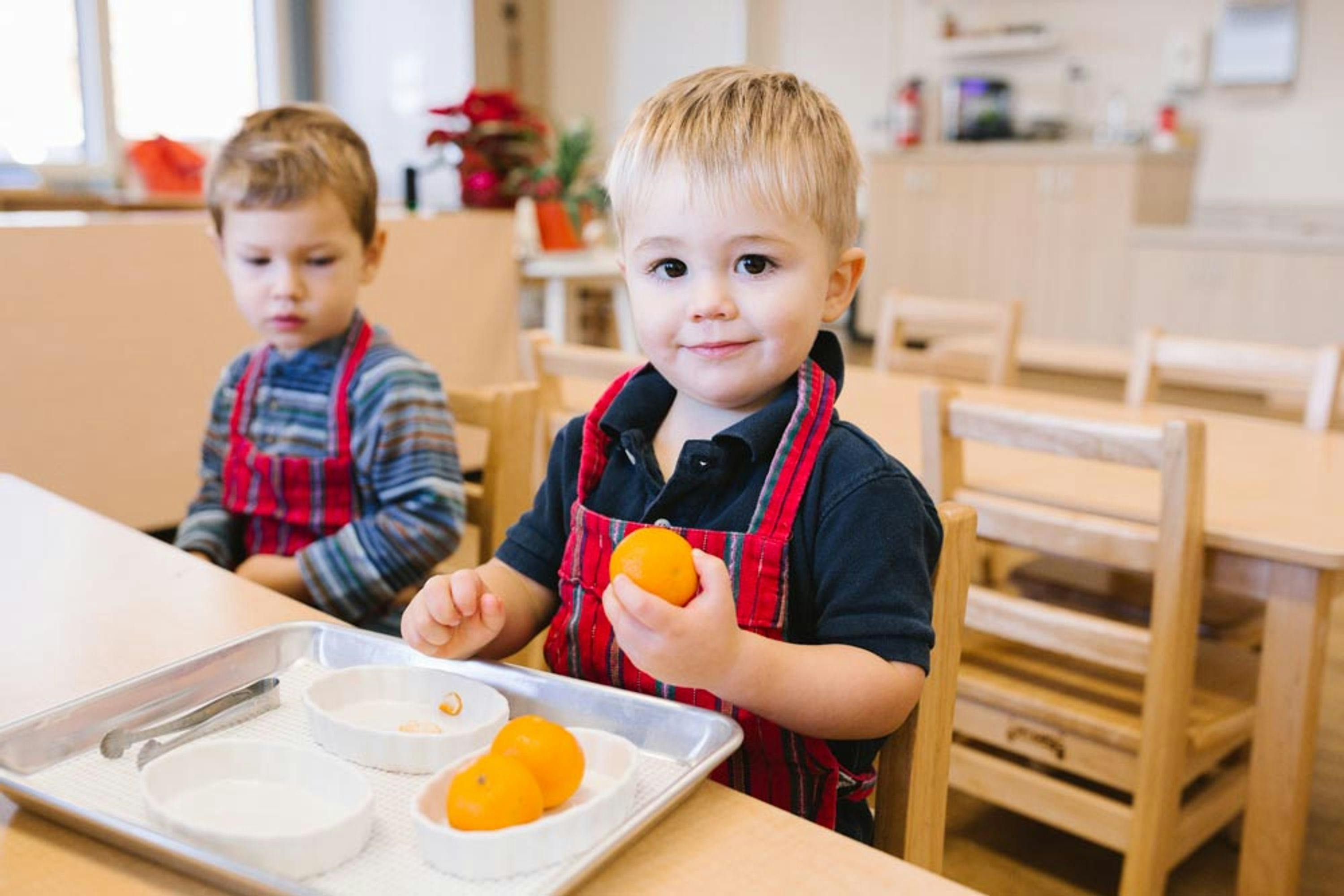Tips To Ease Separation Anxiety
Separation anxiety can be troublesome for both the parent and the child, but it doesn’t have to be this way! Parents deserve to trust our children are in the right place, so before you approach mornings in fear, start here
The Guidepost Team
If you plan to introduce your toddler to a new school soon, how are you feeling about that? Change for your child is an exciting, special time, but it can also be unsettling as you anticipate leaving them in the mornings and spending time away from one another. It’s ok to feel this way.
Separation anxiety can be troublesome for both you and your child, but it doesn’t have to be. You both deserve a cheerful start to the day and to trust that your child is in the right place. Before you approach your new mornings in fear, start here.
- Help your child anticipate change.
- Give a quick goodbye.
- Bring something from home.
Help your child anticipate change.
First, about a week before starting a new school, take your child to the school and say to him with enthusiasm, “This is your new school! You are not going to stay here today, but next week, I will drop you off here, then I’ll come back later in the day to pick you up!”
When you see his teacher, point her out and say to your child, “Look, there is your teacher. You can wave to her next week when you arrive in the morning and say hello!”
As you walk through the building, help your child to acclimate to new surroundings. “This will be your coat hook. This will be where you put your lunch box. This will be your classroom. This will be your restroom.”
Then, as you leave the school, repeat everything you just went over. “So, where are we going to go in a week? Yes, school! What are we going to do when we first get to school? Yes, hang up your jacket!” And remind your child here, too, of how your goodbyes will go. “You will give Mommy one hug and one kiss, then Mommy leaves and you go into the classroom to choose work.”
Talking about each step not only solidifies a developing routine, it gives your child the information they need in advance of the change to feel less anxious and more in control. Instead of feeling separation anxiety, they will feel prepared and eager to take on something new.
Give a quick goodbye.
If your child begins to cry as you try to leave the school, you will always feel that you cannot leave the school until he stops crying. Every parent feels this tug, and every teacher is empathetic to that, but that will never happen. Your child will never stop crying if you are still there. They will only stop crying after you have left, which means your presence only prolongs their tears.
Therefore, you must choose positive emotions for both you and your child. Communicate with your body language that school is a safe place and that you are happy your child is there. So often, the most anxiety comes from a self-fulfilling prophecy on behalf of the parent. Then, the child feels Mom’s worry and thinks to himself, “If Mom is scared of leaving me here, there must be something wrong with this place!” Do not let your child pick up these nervous cues from you.
Instead, come into school with warm greetings and a smile. Comment to your child on something cheery in the place or something you saw from your visit the week before, and revert their attention to the routine you’ve discussed. If you notice he is still getting upset, remind him of the steps. “We just hung up our jacket. Remember now, what do we do next?”
And remain consistent every single day. Your toddler is trying to understand the way the world works. He’s wondering all the time, How does this work? What do people do? This is why routine makes so much sense to him and why he begins to crave it as such. He can anticipate what comes next, and that pleases him.
This is also why changing a routine — even in any small way that seems insignificant to you — can be very upsetting to a child. Sneaking in one more hug or one more kiss or a lingering goodbye because you want that will only disrupt your child’s routine and become a setback for the both of you. Maintain a quick goodbye.
Doing things the same way every single time gives your child the deep sense of security he needs to thrive. If your family is experiencing separation anxiety, don’t fight it or be frustrated by it. Lean into the consistency of routine, and trust the results.
Bring something from home.
If your child’s teacher allows you to bring in an object from home, include your child in picking out a family photograph or plant, for example, and then let your child be the one who brings it into the classroom. If he carries it in and gets to choose where it belongs, the object suddenly becomes something of his in this new space, and that makes your child feel a part of something, as if to feel, “Ok, this is my place, I belong here.”
And, you should feel that way, too. Because your child does belong, and your child is going to do great.
The Guidepost Team
The Guidepost Team is a group of writers and educators dedicated to helping demystify all things Montessori.
Sign up for our newsletter
Get started with our community today! Sign up for resources.
